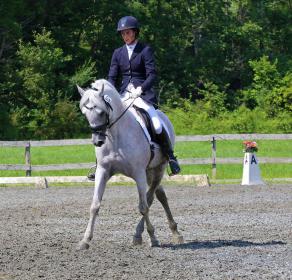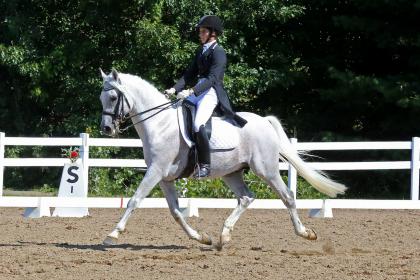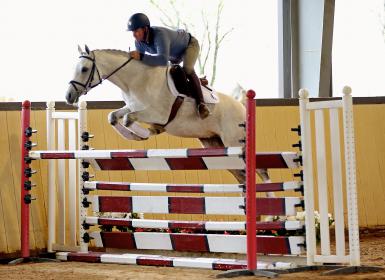OK. The vast majority of my WB pedigree studies was with the Holstein mares.
You go back far enough there is a SIGNIFICANT amount of Arab blood, pure Arab blood from the desert and their sons. Some of these Arabs were VERY significant in the European breeding stock back in the day. Plus, at least in the Holstein breed, there was significant inbreeding to some of the top Arab stallions and their sons.
It was interesting looking at the pictures in the “Holsteiner Stutenstamme”, I saw some pictures of mares several generations past their Arab stallion ancestors with: Level croup, often with the “Arabian triangle” croup conformation, several with pretty decent “mitbahs” (throatlatch area) and occasionally some hint of Arab in the head. This all disappeared when the modern TBs came in (the old time TBs did not wipe it out) and the necks went TB, the croups went TB, and the heads went TB.
So this is a warning. Find an Arabian with almost the same conformation as the WB, Arabs are great refiners etc., but the Arab blood works best by blending with another blood line. If you breed a WB to an Arab hoping to significantly improve things you don’t like, by breeding two horses that have no similarities in their conformation, you may not get what you want. If you buy a WB/Arab, ignore the trot at first. Study good/decent conformation pictures (hopefully not stretched out), note the shoulder, croup and neck (plus pay attention to the legs!) of the horse and its parents. If you can meet the horse and/or its parents look deep in their eyes and “look” for sanity (I really do not know how to explain how to do this.)
This advice is based on the writings of the great Arab breeders, English, Polish, “German”, and American, plus a lot of interesting commentaries by Carl Raswan about how the Arab blood was introduced to Europe. Some of the Arab stallions were very dominant in their influence on the European breeding stock, both on the phenotype of their get and the obvious influence of their genotype down the generations for a long time. Those genes may be hidden now, but they may “reappear” when crossed with an Arabian.


 That’s my Trak with the Arab sires on his dam’s side… I love the endurance, but the spooking isn’t fun for me, anymore.
That’s my Trak with the Arab sires on his dam’s side… I love the endurance, but the spooking isn’t fun for me, anymore.




